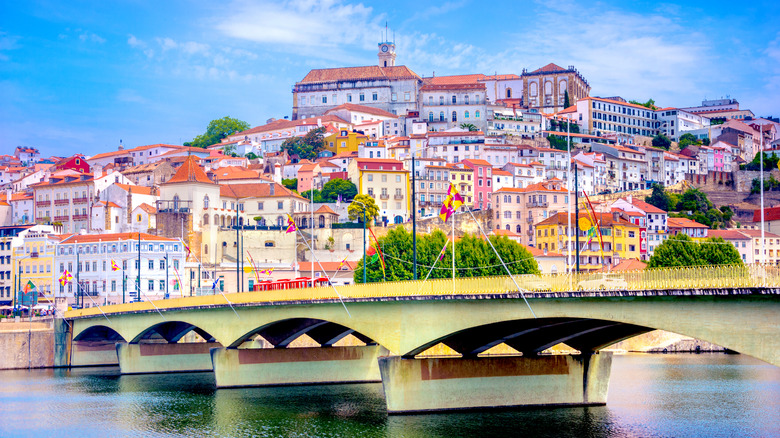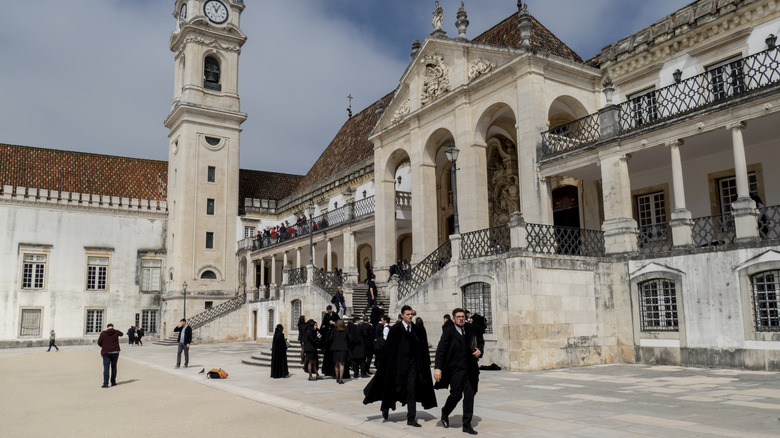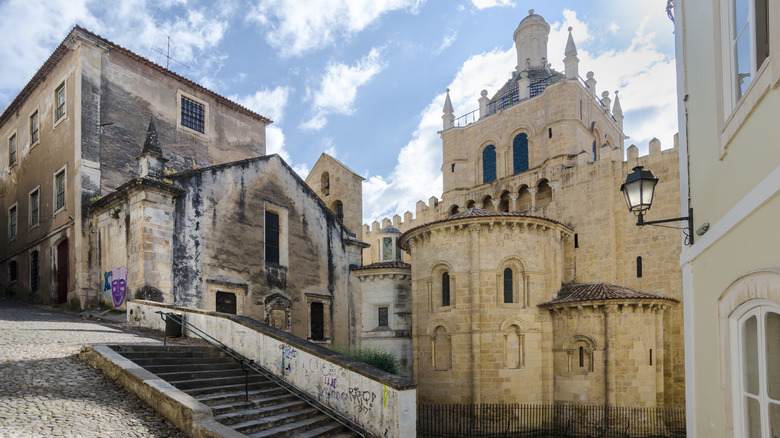Portugal's Easiest-To-Enjoy City Is A Less Crowded Mini Lisbon, According To Rick Steves
If you plan a trip to Portugal, you'll probably visit Lisbon, a gorgeous city full of history, beautiful art, wonderful food and drink (port, of course), and tourists. Any major European city in a popular country will be crowded, and sometimes that can affect how much you can see and do. If you want a city in Portugal to explore with some of the same features as Lisbon without all the other vacationers, travel pro Rick Steves has a great suggestion: Coimbra.
"A couple of hours north of Lisbon, Coimbra is the Oxford or Cambridge of Portugal — the home of its most venerable university," Steves wrote on his website. "It's also the country's easiest-to-enjoy city — a mini-Lisbon, with everything good about urban Portugal without the intensity of a big metropolis. I couldn't design a more delightful city for a visit." It's worth driving from Lisbon just to experience Coimbra, an old city with plenty to do. (Follow Steves' advice for choosing the right European company to rent a car from.) You can encounter charming streets full of shops and cafes, a university with an 18th-century library, Roman ruins, and a nearly 1,000-year-old cathedral.
Visit the University of Coimbra
The University of Coimbra (pictured) sits atop a hill, which Rick Steves describes as a lovely place to walk around. He mentions an elevator to take you halfway up (and a funicular the rest of the way). Even if you walk, it's worth the effort to see one of the oldest universities in the world, founded in 1290. The 16th-century campus is a UNESCO World Heritage Site, reportedly one of only five universities to have received the designation.
Inside, you'll find King João's Library or Biblioteca Joanina, a Baroque 18th-century spot that holds thousands and thousands of books, along with a colony of bats. The creatures help get rid of any insects threatening the old books. Decoration covers every inch of the library, and you could spend hours just observing. The university, once autonomously governed, even has a prison. You can visit the library, the chapel on the grounds, and the chemistry lab for around $15.
Steves suggests eating at the university cafeteria for an inexpensive and fun meal. He also recommends the nearby Machado de Castro Museum, which is in a former bishop's palace. It features incredible art from the 14th to the 16th centuries, with vaulted halls from the Roman era underneath that you can walk through.
The streets, cathedral, and Roman ruins of Coimbra
Rick Steves also wrote about what you'll see in town: "One of the best activities in Coimbra is wandering the inviting, Arab-flavored old town — a maze of narrow streets, timeworn shops, and tiny tascas (budget eateries)." One of his favorite spots is the Mercado Municipal which he says feels like old Europe. "Visitors can still feel the wrinkled and fragrant pulse of the town and see the 'salt of the earth' in the faces of the women selling produce while their men are off in the fields — or in their beloved 'little chapels' (a.k.a. bars)." He recommends getting Coimbra's favorite seafood, bacalhau, which is dried and salted cod, though these days it's imported from Norway. Steves loves the fado or folk music, which, unlike the rest of Portugal, is usually sung by men in Coimbra accompanied by the Portuguese guitar.
If it's hot out (heed Steves' advice on the common tourist clothing mistake in Europe) walk inside the stone Santa Cruz Monastery from the 12th century where St. Anthony once studied. You can also see the Gothic tombs of Portugal's first two kings and visit the Café Santa Cruz inside a former chapel with stained glass. Don't miss the Roman ruins of Conimbriga just outside the city with stunning mosaics, pond gardens, and fountains. Finally, visit the Romanesque Old Cathedral from the late 12th century with its 16th-century gilded altarpiece, and the 18th-century Botanical Garden next to a 16th-century aqueduct.


